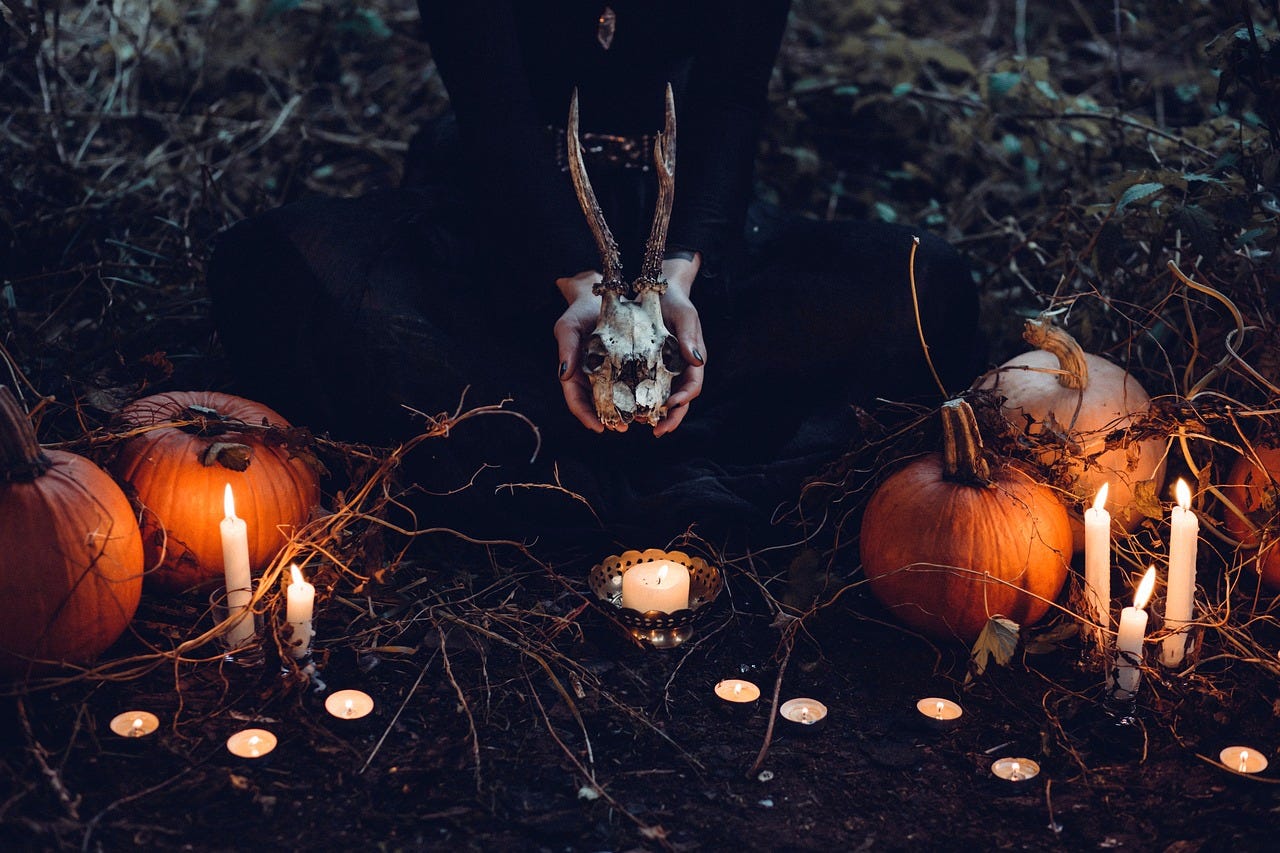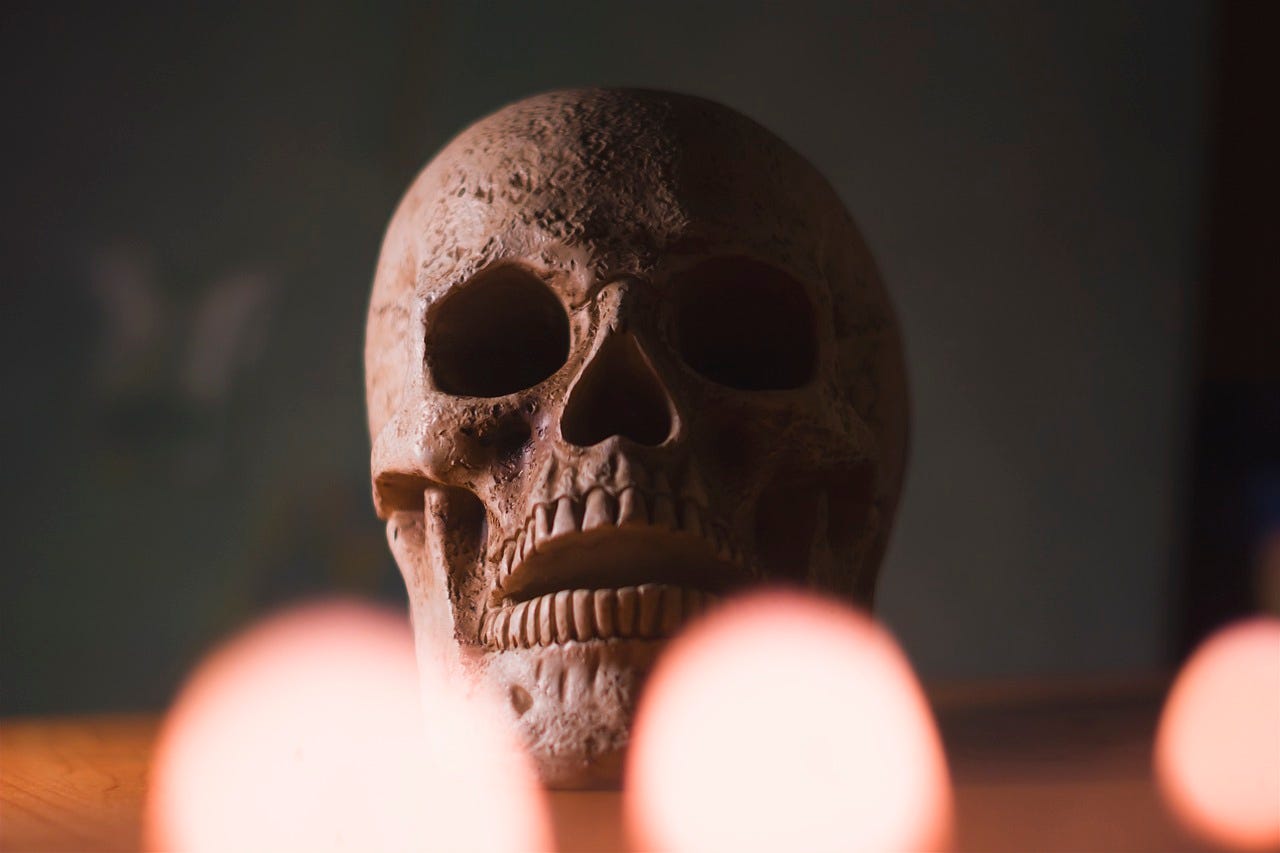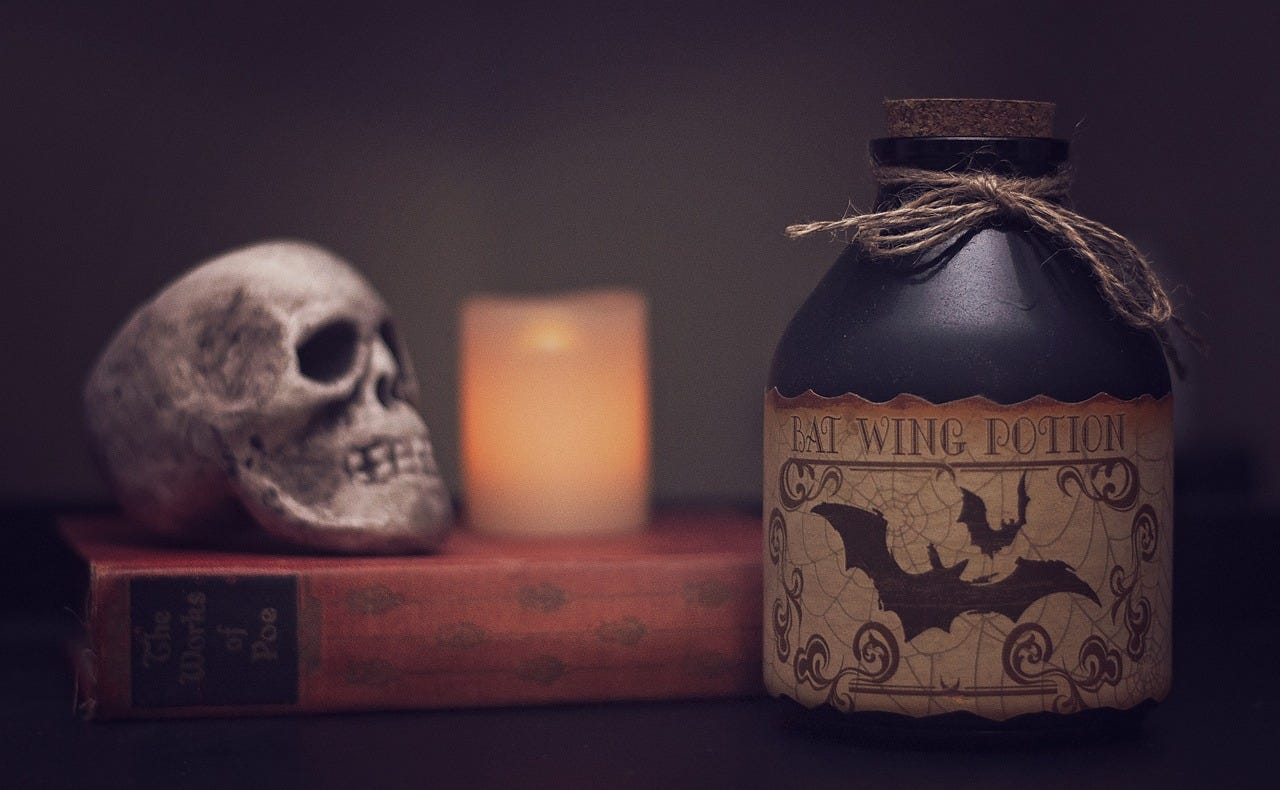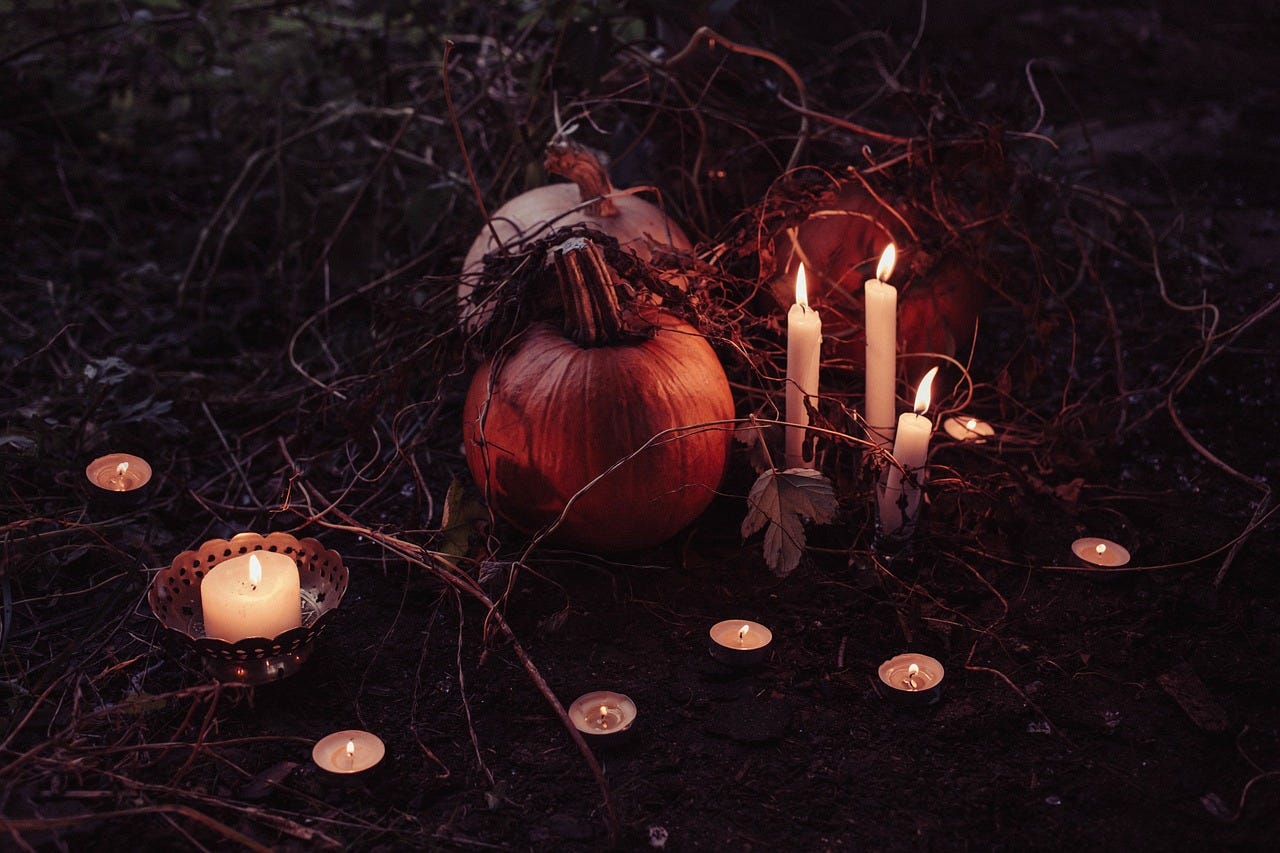It was a dark Samhain night and shenanigans were under way. The powerful mythological queen from Irish folklore, Medb and her husband Ailill were hosting a feast as was expected at this time of year. Such a celebration would involve all manner of delicious food and copious amounts of alcoholic beverages including, of course, ale. And so, as often is the case when one has been drinking, Ailill decided to see who he could coax into making bad choices and came up with a bit of a dare.
You see the day before, they had hanged two captives on the gallows, and so he had the bright idea to bet the men around him that if they could put a ‘withe’ (either a willow branch/similar wood used in weaving or a band of the aforementioned pre-woven) on the foot of one of the two dead.
Now, there was a bit of a catch:
‘Great was the darkness of that night and its horror, and demons would appear on that night always.’
And so each man that tried their hand at the challenge would quickly find himself rushing back into the safety of the house.
But not Nera, no, Nera was brave. And determined. He bet Ailill his gold-hilted sword that he could do it.
So off he goes.
He tried three times to put the withe around the man’s ankle and three times it pops off. Finally, likely annoyed by the whole situation and Nera’s inability to secure his prize, the dead man tells him he needs to put a peg on it so it won’t keep springing loose, otherwise he will be at this all night.
Nera heeds the hanged man’s advice and the withe remains secure. Now, the dead man decided next to praise Nera for his manliness. Really buttering him up. ‘That is manly, o Nera, Manly indeed’. He does so because he wants Nera to carry him around on his neck, as you do. You see he died thirsty and wants a drink. And Nera, who seems to think this is all perfectly reasonable and sees absolutely nothing at all wrong with a talking corpse demanding to be carried around for water, complies.
Naturally, this all ends up with the hanged man spitting water in the faces of the people in the home he chooses to drink in, cursing them all so they died. We are told from thence on it was bad to have a bathing tub or washing tub, or similar things in the house after you went to bed.
Again, Nera seems generally unfazed and takes the man back to the gallows.
Once he returns back to the house, he finds the building engulfed in flames and the heads of his people piled nearby, slaughtered by the warriors of the sidhe- the sídhe referring to residences of otherworldly beings, the aos sí, The Fair Folk.
Distressed, he follows these warriors back to their home. Here he ends of marrying a woman and finding out that what he had seen on Samhain night was simply a vision of things to come on the next Samhain, unless Medb and Ailill defeat the host.
Nera returns to warn them, realising no time has passed, even though he had been living with the woman for several days. They listen and make preparations to go attack the warriors to prevent the destruction of their own household.
Over the next year, lots of shenanigans ensue involving various bulls fighting each other and The Morrigan herself even makes an appearance.
But as the countdown reaches its final climax, it’s an oath from Medb that really catches my eye as a beer historian. At the end of the tale, right before the battle commences. She declares to her gods, that she must witness two particular bulls fighting before her and she won’t sleep, or eat, or drink ‘red ale nor white’.
**
In early medieval Ireland and later, ale was of critical importance, and abstaining from it, as Mebd threatens to do, alongside eating and sleeping, was a significant sacrfice. It was a part of everyday life, a drink that served both ritual and nutritional value.
Samhain in the Late Iron Age and early medieval period wasn’t what we perhaps conceive of it today, but it does have some similarities. It was one of the four feasts of the year alongside Beltane, Imbolc, and Lughnasadh. It marked the end of the harvest and the beginning of the winter period; notably it also kicked off a series of feasts. The famous Hill of Tara was also closely associated with Samhain, but it wasn’t the only place that celebrated. And these celebrations required massive amounts of ale, which we know from the primary sources. And these also called for different kinds of ale, perhaps like Medb’s white and red.
So like our modern Halloween celebrations, or Samhain festivities, our ancestors too indulged in some lovely ales. Although now many of us may reach for the pumpkin variety, maybe like Queen Medb, you might consider drinking a red ale tonight. And if you are interested in learning more about the history of ale and beer in Ireland, my book Filthy Queens: A History of Beer in Ireland, will be out in January 2025. So watch this space.
***
I used Kuno Meyer’s translation of the Adventures of Nera for my post.







